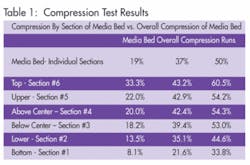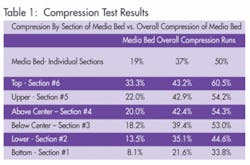Study Examines “Sustainable Path” for Water Infrastructure
Water utilities should set the price of their services to fully cover the cost of paying for that service and maintaining the associated infrastructure; adopt watershed-oriented policies; and use integrated water resource planning and management as a principal tool for preserving and restoring water resources.
These are just some of the policy recommendations and guiding principals of sustainable water infrastructure outlined in a new report from the Aspen Institute’s Energy and Environment Program. The report, “Sustainable Water Systems: Step One – Redefining the Nation’s Infrastructure Challenge,” was published in early July and is the result of a year-long discussion on sustainable water infrastructure in the United States.
The study examined the challenges that America’s drinking water and wastewater systems are now facing in maintaining and replacing their pipes, treatment plants, and other critical infrastructure.
The report offers 10 policy recommendations, three key principles of sustainable water infrastructure, and 20 guiding elements of water management. It attempts to create a “sustainable path forward for the nation,” according to its authors.
A generation of progress has been made under the Clean Water Act and the Safe Drinking Water Act. However, serious challenges still exist for the nation’s freshwater resources, including insufficient progress in achieving water quality goals, overuse of water resources, and looming challenges associated with global climate change, including droughts, heavy storm events and flooding. Meanwhile, water and wastewater utilities are struggling with aging infrastructure that needs to be upgraded or replaced.
Control of urban stormwater and rural runoff will require significant new investments. Appropriate sources of funding and affordability of these investments also requires attention, according to the report.
It was in this context that the Aspen Institute convened the Dialogue on Sustainable Water Infrastructure in the U.S., bringing together leaders from the water utility industry; federal, state and local government regulators; and non-profit environmental groups to develop policy recommendations that address water infrastructure planning and management challenges for the coming decades. Between May 2008 and March 2009, participants in the dialogue met on four separate occasions to discuss the complex issues surrounding US water resources.
Three key principles evolved during the discussions. The first principle is that the traditional definition of water infrastructure must evolve to embrace a broader definition that includes both man-made infrastructure and natural watershed systems.
The second key principle is that the definition of sustainable water infrastructure should be embraced by all public and private entities involved in water management, and that their planning process include environmental, economic and social considerations.
Finally, the third principle is that watershed-based management must take into consideration drinking water, wastewater and stormwater services to ensure integrated, sustainable management of all water resources.
The report also includes a set of 20 elements to help support a financially and environmentally sustainable 21st century water infrastructure. The “Sustainable Path” elements include key concepts for good governance, watershed optimization, public outreach, water conservation and energy management, and utility pricing.
The Aspen Institute Dialogue on Sustainable Water Infrastructure in the United States was supported by the Water Environment Federation, the National Association of Water Companies, and CH2M HILL. A copy of the report may be found in the Publication section of the Aspen Institute’s website, www.aspeninstitute.org.
I used the term “water utilities” at the beginning of this article. That term in my mind includes all utilities that provide water-related services, including drinking water, wastewater and stormwater management. In the end, it’s all water.
James Laughlin, Editor

